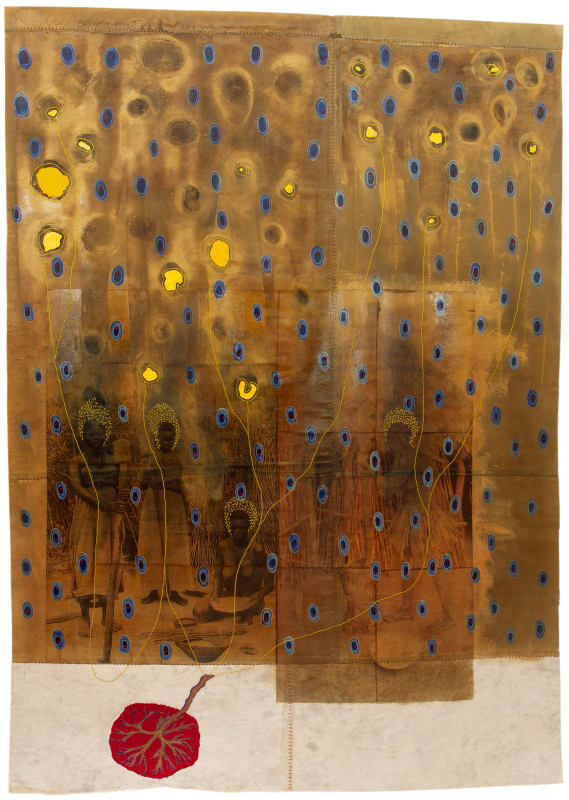Tuli Mekondjo (b.1982 Angola) is a Namibian artist, whose richly multifaceted practice considers the sociohistorical context of Namibia as a site to re-evaluate and consider ideas around ancestry and identity. Mekondjo lives and works in Windhoek, Namibia.
Known for her mixed media and embroidered paintings, Mekondjo’s rigorous practice is a pursuit to connect with and honor her Namibian heritage. Her practice in both mixed media and performance, navigates feelings of displacement, having spent her childhood in refugee camps of Angola and Zambia during the Namibian War of Independence. Sensitive explorations of history and ancestry allow Mekondjo to address, question, and heal parts of this past, deftly weaving personal and collective trauma with beauty, nature and optimism.
Mekondjo collects historical photographs — sourced from books, public and personal archives, and postcards — which are then used as a starting point for the figures in the works. She reclaims imagery of local Namibians from the colonial and apartheid periods of South West Africa, during both German and South African occupation in the 20th Century. The work becomes an homage to those figures, often women, preserving and honoring their memory. Mekondjo’s work brings to the fore colonial histories and their legacies, considering present echoes of the past. She threads together iconography of the earth and body with a spirituality influenced by Namibian heritage and its rituals.
Actively collaborating with the earth, Mekondjo has many methods to prepare her surface — burying the canvas in soil for weeks as well as preparing the surface with resin and mahangu, a millet grain and a staple food in northern Namibia. Her use of mahangu draws inspiration from and places importance on the women who work the land. Canvases are then layered with additions of wild silk, and cotton fabrics are imprinted with rusted metal and salt to create vivid patterning. Areas are burned, the black residue left on the surface representing the absence and erasure of stories.
Embroidered and painted elements incorporate powerful symbolism, entwining the botanical and bodily. Roots connected to fetuses and skeletons reference fertility and ancestry, suggesting the many ways that the past finds its way into the future. In luminescent works of shimmering gold, crowned figures are shrouded in plants and flora as if protected. In palimpsestic work, Mekondjo reflects the fragmentary character of memories and histories.
